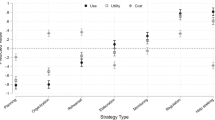Conclusions
In essence, this study has completed a triad of efforts to identify and weigh factors critical to the proper selection of individuals for training as self-instructional programers. It would now appear that we have reliable measures that can be used as guidelines. The most powerful of these selection criteria is the combined Otis IQ and Watson-Glaser Critical Thinking scores. It was found in the 1963 study that these two scores, working in concert, were more powerful and sensitive than either working alone. This result was confirmed in the present study with the finding of significance beyond the 001 level, indicating that the difference could be attributed to chance in only one case out of one thousand. In Figure 1, we find a representation of the utility of this predictor in assessing the success of programers in the upper and lower quartiles. Using figures to be explained below, we sought to determine whether a combined score of 187 or less would indicate failure while a combined score of 207 or more would indicate success.
Similar content being viewed by others
References
Borg, W. R.Educational research: An introduction. New York: McKay, 1963. Pp. 270–284.
Brink, R. O. Problems in developing a programming capability.NSPI Journal, 1963,2 (8), 12–14.
Bullock, D. H. An hypothesis about the training of instructional programers.Programed Instruction, 1965,5 (1), 6–8.
Edwards, A. L.Statistical analysis. (Rev. ed.) New York: Holt, Rinehart & Winston, 1964. Pp. 71–73.
Hughes, J. L.Programmed instruction for schools and industry. Chicago: Science Research Associates, 1962.
Lysaught, J. P. Programed learning and teaching machines in industrial training. In S. Margulies & L. D. Eigen (Eds.),Applied Programed Instruction. New York: Wiley, 1962, 23–43.
Lysaught, J. P. An analysis of factors related to success in constructing programmed learning sequences.Journal of Programmed Instruction, 1963,2 (3), 35–42.
Lysaught, J. P. Further analysis of success among auto-instructional programmers.Teaching Aids News, 1964,4 (19), 6–11. (a)
Lysaught, J. P. Selecting auto-instructional programmers.Personnel Journal, 1964,43 (7), 382–385. (b)
Lysaught, J. P. Inducing change in the classroom through the development of teacher-programmers. In J. Leedham & D. Unwin (Eds.),Aspects of educational technology. London: Methuen, 1967. Pp. 399–409.
Lysaught, J. P. Research on programmer training: What has been done; what needs doing.NSPI Journal, 1968,6 (5), 6–9.
Lysaught, J. P., & Pierleoni, R. G. A comparison of predicted and actual success in auto-instructional programming.Journal of Programmed Instruction, 1966,3 (4), 14–23.
Mager, R. F. Criteria for evaluation.Proceedings of the second Rochester conference on self-instruction in medical education. Rochester, New York: Rochester Clearinghouse, The University of Rochester, 1967. Pp. 40–53.
Markle, S. M. De-emphasis on dogma: Training for creative programing.Programed Instruction, 1965,5 (1), 1–9. (a)
Markle, S. M. It figgers.NSPI Journal, 1965,4 (2), 4–5. (b)
Polin, A. T., Morse, R. J., & Zenger, J. H. Desirable experience for selecting instructional programmers from in-plant employees.Personnel Administration, 1962,25 (6). (a)
Polin, A. T., Morse, R. J., & Zenger, J. H. Educational criteria for selecting instructional programmers from in-plant employees.Journal of the American Society of Training Directors, 1962,16 (9), 47–49. (b)
Polin, A. T., Morse, R. J., & Zenger, J. H. Selecting programmers from in-plant employees.Personnel Journal, 1962,41 (8), 398–399. (c)
Rothkopf, E. Z. Some observations on predicting instructional effectiveness by simple inspection.Journal of Programmed Instruction, 19632 (2), 19–20.
Smith, D. E. P. Speculations: Characteristics of successful programs and programmers. In E. Galanter (Ed.),Automatic teaching: The state of the art. New York: Wiley, 1959, 91–102.
Author information
Authors and Affiliations
Additional information
The research reported herein was supported by the Cooperative Research Program of the Office of Education, U. S. Department of Health, Education, and Welfare. Cooperative Research Project No. OEC-1-7-068407-0286.
Rights and permissions
About this article
Cite this article
Lysaught, J.P., Pierleoni, R.G. Predicting individual success in programing self-instructional materials. ECTJ 18, 5–24 (1970). https://doi.org/10.1007/BF02769439
Issue Date:
DOI: https://doi.org/10.1007/BF02769439




